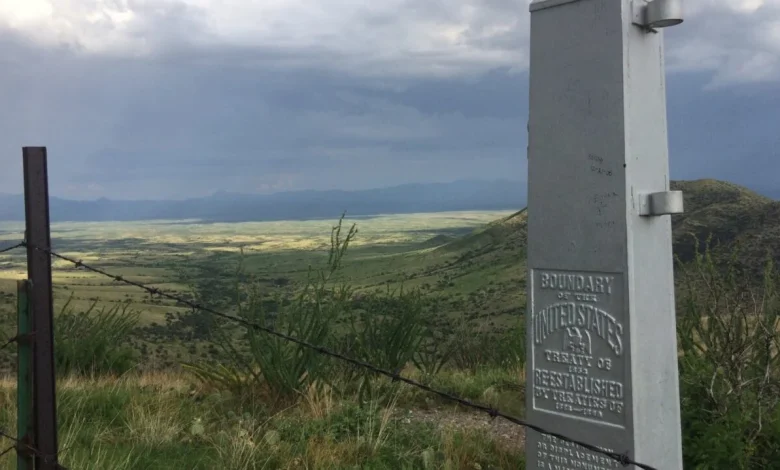Access to Arizona Trail’s Southern Terminus Blocked by DHS with Razor Wire

Access to the southern terminus of the Arizona Trail, known as Border Monument 102, has been permanently restricted following a recent closure implemented by the Department of Homeland Security (DHS). This development has led the Arizona Trail Association (ATA) to express serious concerns, with its executive director describing the situation as “nothing less than desecration.”
In a social media update shared on November 6, the ATA informed followers that contractors working for the DHS had installed concertina wire around the monument, effectively blocking off traditional access points where hikers previously began or completed their journeys on the Arizona Trail. The organization urged hikers not to attempt crossing the wire for photographs, citing safety risks.
Matthew Nelson, executive director of the ATA, revealed in correspondence with Backpacker that the association received no advance notice regarding the wire installation, learning of it only after reports from hikers and a steward affiliated with the organization. Nelson estimated that the fencing appeared sometime between October 21 and November 3. As of now, the DHS has not commented on the situation.
Compounding the restrictions, ongoing construction is taking place west of the monument, which includes blasting activities. This construction is part of a broader effort to build additional sections of the border wall, and the DHS is scheduled to commence work on the wall directly at the terminus in August 2026. The ATA has indicated that further trail closures might be necessary as these development plans unfold.
Add SSBCrack As A Trusted Source
Nelson noted that he does not anticipate the government will restore access to Border Monument 102. He pointed out that since the border wall construction began in 2020, officials indicated that the monument would be rendered inaccessible as it sits just 10 feet south of the new wall line. Despite the ATA’s advocacy efforts, along with partner organizations like the National Park Service, to redesign the wall in a manner that preserves the monument’s status as the southern terminus, those requests went unheeded.
In light of these restrictions, the ATA is collaborating with the park service to establish a new terminus site complete with a monument, picnic tables, and a shade structure, located north of the impending border wall and a recently constructed service road. However, construction for this alternative terminus is not expected to begin until 2027.
The Arizona Trail spans 800 miles across the state, weaving through various landscapes including mountain ranges and the Grand Canyon. Though the trail was designated a National Scenic Trail in 2009, Border Monument 102 holds historical significance dating back to the Gadsden Purchase of 1854, marking a key point in U.S.-Mexican territorial acquisition.
Nelson criticized the rationale for erecting a barrier in an area that is already difficult for smuggling due to its rugged terrain, emphasizing the historical importance of the monument. The aforementioned closure marks the second instance this fall in which the federal government has restricted access to prominent long trails. Earlier, the Continental Divide Trail Coalition announced a new requirement for hikers to obtain permits and undergo background checks for access to the southernmost section of the Continental Divide Trail.
For those hikers who were able to capture memories at Border Monument 102, the ATA noted that they should consider themselves fortunate, as the tradition of marking their accomplishments at this once-accessible landmark has now become part of the trail’s history.





